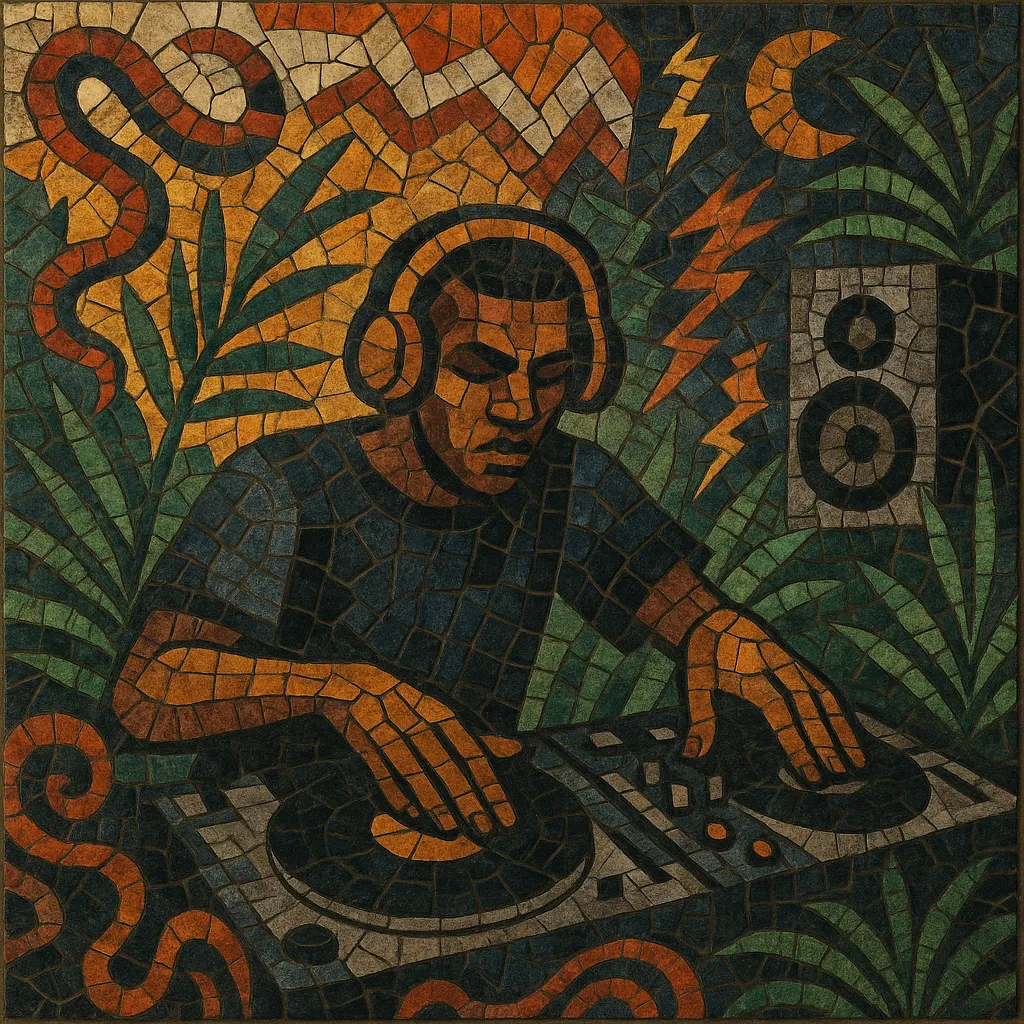Jungle is a fast, breakbeat-driven electronic music genre that emerged in the UK in the early 1990s. It is characterized by heavily chopped and re-sequenced funk drum breaks (most famously the Amen, Think, and Apache breaks), deep sub-bass rooted in reggae and dub, and frequent use of ragga and dancehall vocals.
Typically around 160–175 BPM, jungle emphasizes syncopation, polyrhythms, ghost-note snare articulations, and swung grooves. Production often features time‑stretching artifacts, pitch‑shifting, rewinds, sirens, and dub‑style effects, creating a kinetic, raw, and rhythmic sound world.
While closely related to drum and bass, jungle retains a distinct identity through its reggae/dancehall influence, looser and more chopped breakbeats, rough-and-ready sample aesthetics, and sound system culture sensibility.
Jungle developed in the United Kingdom out of the early 1990s hardcore rave scene, as producers pushed breakbeat hardcore toward darker atmospheres and more complex, syncopated drum programming. Sound system culture and pirate radio nurtured the style, with reggae, dub, and dancehall aesthetics—sub‑bass weight, toasting/MCs, rewinds—melding with hip hop sampling and rave futurism.
By 1993–1994, the hallmarks of jungle were firmly in place: rapid, sliced funk breaks, rolling sub-basslines, ragga vocals, and dub effects. Labels and clubs such as Metalheadz at the Blue Note, Reinforced, Suburban Base, and Moving Shadow, along with pirate stations (Kool FM, Don FM), created a vibrant ecosystem. The Amen break became iconic, while producers refined techniques like time‑stretching, pitch‑shifting, and intricate ghost‑snare programming.
Around 1996, a parallel evolution emphasized cleaner production, straighter rhythms, and a broader palette, solidifying drum and bass as a distinct yet closely related genre. Jungle’s ragga/dancehall flavor and chopped breaks continued alongside darker strands (darkside) and atmospheric/intelligent strains, but the market and press increasingly grouped forward‑leaning output under the drum and bass banner.
Periodic revivals, reissues, and new-school productions rekindled interest, with producers revisiting classic breaks and dubwise aesthetics through contemporary tools. A global community of DJs, labels, and online radio has sustained jungle’s legacy, bridging original heads and new listeners while championing the genre’s DIY, sound‑system ethos.
Jungle helped define UK club culture, pirate radio, and MC-led dance music. It influenced numerous genres—drum and bass, speed garage, dubstep, and drill ’n’ bass—while cementing techniques (break chopping, sub-bass design, dub effects) that remain foundational in modern bass music.


